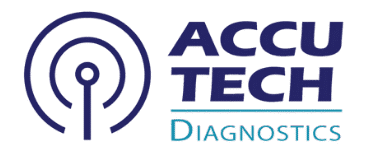Therapeutic Drug Monitoring
"Therapeutic Drug Monitoring" (TDM) is a specialized clinical laboratory service that involves measuring the concentration of certain medications in a patient's blood (or other body fluids) to optimize drug dosing, ensure efficacy, and minimize toxicity.
Why is Therapeutic Drug Monitoring Necessary?
TDM is particularly important for drugs that have:
TDM is particularly important for drugs that have:
- A Narrow Therapeutic Index (Window): This means there’s a small difference between the effective dose and a toxic dose. A slight increase in dose or blood concentration can lead to severe side effects, while a slight decrease can lead to treatment failure.
- Example: Digoxin (for heart conditions), Lithium (for bipolar disorder).
- Significant Inter-Individual Variability in Metabolism/Pharmacokinetics: Patients absorb, metabolize, and excrete drugs differently due to factors like genetics, age, liver/kidney function, interacting medications, and disease states.
- Example: Immunosuppressants (tacrolimus, cyclosporine) in transplant patients.
- Unpredictable Dose-Response Relationships: The desired effect isn’t easily predictable from the dose alone.
- No Easily Measurable Clinical Endpoint: The drug’s effect isn’t immediately obvious or measurable by simple clinical signs.
- Example: Antiepileptic drugs – seizure control is the endpoint, but it’s not always immediate.
- Long-Term Therapy: For chronic conditions where patients will be on the medication for extended periods.
- Patient Non-Adherence (Compliance) Issues: TDM can help identify if a patient is not taking their medication as prescribed.
Common Drugs Monitored by TDM:
- Immunosuppressants:
- Tacrolimus, Cyclosporine, Sirolimus, Everolimus: Critical in organ transplant patients to prevent rejection while minimizing nephrotoxicity, neurotoxicity, and infection risk.
- Anti-epileptic Drugs (AEDs):
- Phenytoin, Carbamazepine, Valproic Acid, Phenobarbital, Lamotrigine, Levetiracetam: To achieve seizure control without causing excessive central nervous system side effects.
- Cardiac Drugs:
- Digoxin: For heart failure and arrhythmias, due to its narrow therapeutic index and potential for cardiac toxicity.
- Antibiotics:
- Aminoglycosides (e.g., Gentamicin, Tobramycin, Amikacin): To ensure adequate bactericidal levels while avoiding nephrotoxicity and ototoxicity.
- Vancomycin: To achieve effective levels against resistant bacteria while preventing kidney damage.
- Psychiatric Drugs:
- Lithium: For bipolar disorder, due to its very narrow therapeutic range and significant risk of toxicity (neurological, renal).
- Tricyclic Antidepressants (TCAs): Sometimes monitored due to variable metabolism and potential for cardiac side effects.
- Anti-neoplastic (Chemotherapy) Drugs:
- Methotrexate (high-dose): To ensure adequate clearance and prevent severe toxicity.
- Bronchodilators:
- Theophylline: For asthma/COPD, due to narrow therapeutic index.
The Process of Therapeutic Drug Monitoring:
- Drug Administration: The patient takes the prescribed dose of the medication.
- Sample Collection (Timing is Crucial): A blood sample is collected at a specific time relative to the last dose.
- Trough Level: Most common. Sample collected just before the next dose (lowest concentration). Reflects adequate dosing to maintain therapeutic effect.
- Peak Level: Sample collected after the dose has been absorbed and reached its highest concentration. Helps assess potential toxicity.
- Random Level: Less common, but sometimes used for drugs with very long half-lives or when specific timing is difficult.
- Laboratory Analysis: The blood sample is sent to the diagnostic laboratory, where specialized assays (e.g., immunoassay, chromatography-mass spectrometry) measure the drug concentration.
- Result Interpretation: The laboratory result (drug concentration) is interpreted in the context of:
- The established therapeutic range for that drug.
- The patient’s clinical condition, symptoms, and other medications.
- The patient’s organ function (liver, kidney).
- Dose Adjustment: Based on the interpretation, the clinician adjusts the drug dose or frequency to bring the concentration into the optimal range, balancing efficacy and safety.
Physical Examination Findings
- Blood Pressure (BP): Hypertension (high blood pressure) is a major risk factor.
- Body Mass Index (BMI) / Waist Circumference: Indicators of obesity, which is linked to increased CVD risk.
- Heart Sounds/Murmurs: Can indicate underlying structural heart issues.
- Peripheral Pulses: Assessment of blood flow in the limbs.
Benefits of Therapeutic Drug Monitoring
TDM is a sophisticated service provided by diagnostic laboratories that plays a vital role in optimizing pharmacotherapy for patients on complex or high-risk medications

Improved Patient Outcomes
More effective treatment and reduced adverse events.
Enhanced Safety
Minimizes the risk of drug toxicity.
Individualized Therapy
Tailors treatment to each patient's unique needs.
Reduced Healthcare Costs
Avoids complications, hospitalizations, and unnecessary drug changes.
Confirmation of Adherence
Helps identify if patients are taking their medication as prescribed.

